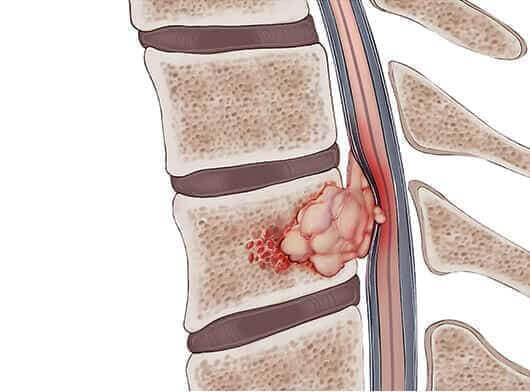-
Surgery
- Radiation
-
Medical Oncology
-
Depending on the type of Spine tumour and its location, surgery may include one or more of the following procedures:
-
Decompression: The removal of the entire tumour or part of it. This may involve debulking (reducing the size), an excision (complete removal), or resection (partial removal) to decompress or relieve pressure on the spinal cord and nerve roots. This aids in reducing pain and other Signs & symptoms of spine tumours.
-
A spinal tumour that develops within or invades a vertebra may cause bony compression or a fracture. While kyphoplasty and vertebroplasty are two procedures that provide immediate fracture stabilisation.
-
Kyphoplasty uses orthopaedic balloons that are inserted into the fracture, inflated to create a hole or cavity, and removed before a bone cement is injected.
-
Vertebroplasty does not use balloons. However, a newer technique combines vertebroplasty with radiofrequency (RF) ablation to remove the tumour tissue and create a cavity for the bone cement. RF ablation uses radio waves to break the tumour’s cellular and molecular bonds to help remove tissue and create the cavity.
-
Spinal stabilisation may be combined with other surgical procedures to treat the tumour. Stabilisation usually involves spinal instrumentation and a bone graft. Instrumentation may include the placement of implants such as rods, interbody devices, and screws to immediately stabilise the spine.
-
A bone graft, either taken from your body (autograft) or a donor (allograft), helps stimulate the growth of new bone to join (fuse) the spinal segment together as it heals. Fusion occurs when new bone growth joins vertebrae together.
-
Spinal decompression and stabilisation may be performed as a Robot-assisted or minimally invasive procedure or by using a traditional open approach which involves a longer incision and longer recovery time.


